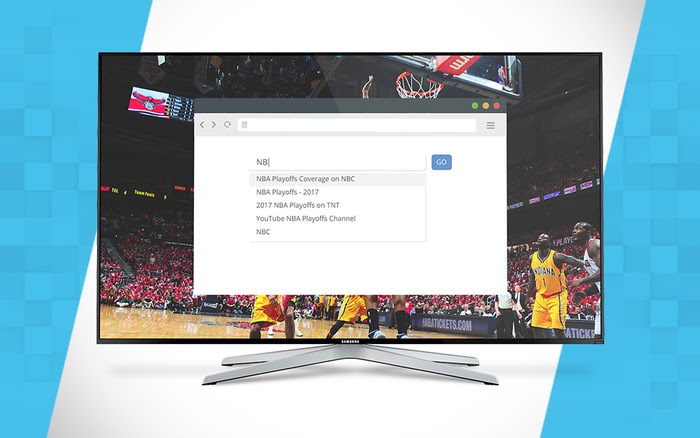7 Easy Facts About Apollo Group Tv Explained
7 Easy Facts About Apollo Group Tv Explained
Blog Article
The Facts About Apollo Group Tv Revealed
Table of ContentsWhat Does Apollo Group Tv Do?Getting My Apollo Group Tv To WorkOur Apollo Group Tv PDFsApollo Group Tv - Questions
In this scenario, as opposed to having three-minute business spots throughout a 30-minute television program, TV shows might transform to one where a customer will be needed to have a monthly registration, so that they cen sight targeted banner ads. This sort of advertising currently occurs on the net, and the amount of information television companies gather enables them to do similar.Clarify the influence of enrollers on program content. Describe the major fads among the broadcasting and cable television networks. When television was in its infancy, producers modeled the brand-new tool on radio. Popular radio shows such as police drama Dragnet and western cowboy collection Gunsmoke were adjusted for television, and new TV shows were funded by solitary marketers, equally as radio programs had been.
Today, the television industry is even more complicated. Programs are funded by several marketers; shows is managed by major media empires; and the three major networks no more control the airwaves but rather share their visitors with countless wire networks. A number of elements account for these trends within the market, consisting of technical developments, federal government guidelines, and the creation of brand-new networks.

The Main Principles Of Apollo Group Tv
Also public television has actually come to be subject to the impact of advertising and marketing. Established in 1969, (PBS) developed out of a record by the Carnegie Commission on Educational Tv, which checked out the function of educational, noncommercial tv on society. The record recommended that the federal government finance public tv in order to supply diversity of shows throughout the network eraa solution produced "not to sell items" however to "improve citizenship and public service (McCauley, 2003)." Public television was also intended to give universal accessibility to tv for visitors in rural locations or audiences that could not pay for to spend for private tv services.
The period between 1950 and 1970 is traditionally identified as the. Aside from a little part of airtime regulated by public television, the 3 significant networks (referred to as the Big 3) dominated the tv industry, jointly representing greater than 95 percent of prime-time viewing. In 1986, Rupert Murdoch, the head of international firm News Corp, launched the Fox network, testing the prominence of the Big 3.
Targeting young and minority target markets with shows such as Buffy the Vampire Killer, Moesha, Dawson's Creek, and The Wayans Bros., the brand-new networks wished to draw stations away from their old network affiliations. Nonetheless, as opposed to duplicating the success of Fox, UPN and WB struggled to make an effect. Unable to bring in many associate terminals, the 2 new networks got to less households than their larger competitors because they were impossible in some smaller cities.
This choice led the way for the development of cable television flick channels, adding to the rapid growth of cord in the 1980s and 1990s. apollo tv group. Further deregulation of cable television in the 1984 Wire Communications Policy Act removed limitations on cord prices, allowing operators to bill what they wanted for wire solutions as long as there was efficient competitors to the service (a requirement that over 90 percent of all cable television markets could meet)
Facts About Apollo Group Tv Uncovered

Having actually created the first "superstation," Turner broadened his world by starting 24-hour news network CNN in 1980. At the end of the year, 28 national programs solutions were available, and the cord revolution had begun. Over the following years, the market undertook a period of fast development and popularity, and by 1994 customers can pick from 94 standard and 20 premium cable television solutions.
Number 9 - https://forums.hostsearch.com/member.php?269806-apollogtv01.16 Enhanced competitors from wire networks has actually triggered a steady decrease in the networks' audience ratings. Throughout the 1950s, the expense of generating a solitary television show increased as shows ended up being much longer and production costs skyrocketed. Sponsorship on network television changed from solitary sponsorship, in which a program was entirely sustained and produced by one marketer, to several sponsorship, in which marketers got 1- or 2-minute places on the program
Each feedback must be a minimum of one paragraph. Pick one of the Big 4 networks and publish out its weekly programs schedule. Enjoy the network's prime-time programs throughout a week, keeping in mind the target demographic for each and every show. Observe the advertising sponsors that support each show and compare exactly how the items and solutions fit with the read this article desired target market.
All about Apollo Group Tv

Direct television, commonly described as conventional program television, encompasses cable television and satellite tv. It's called "direct" due to the fact that material complies with a predetermined programs timetable, unlike on-demand material which the individual audience chooses to watch based on their own preferences and timetable. So, when you ask, "What is direct television?", think about it as the classic way of viewing TV that has been around for decades.
Report this page